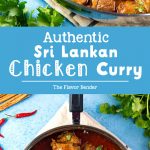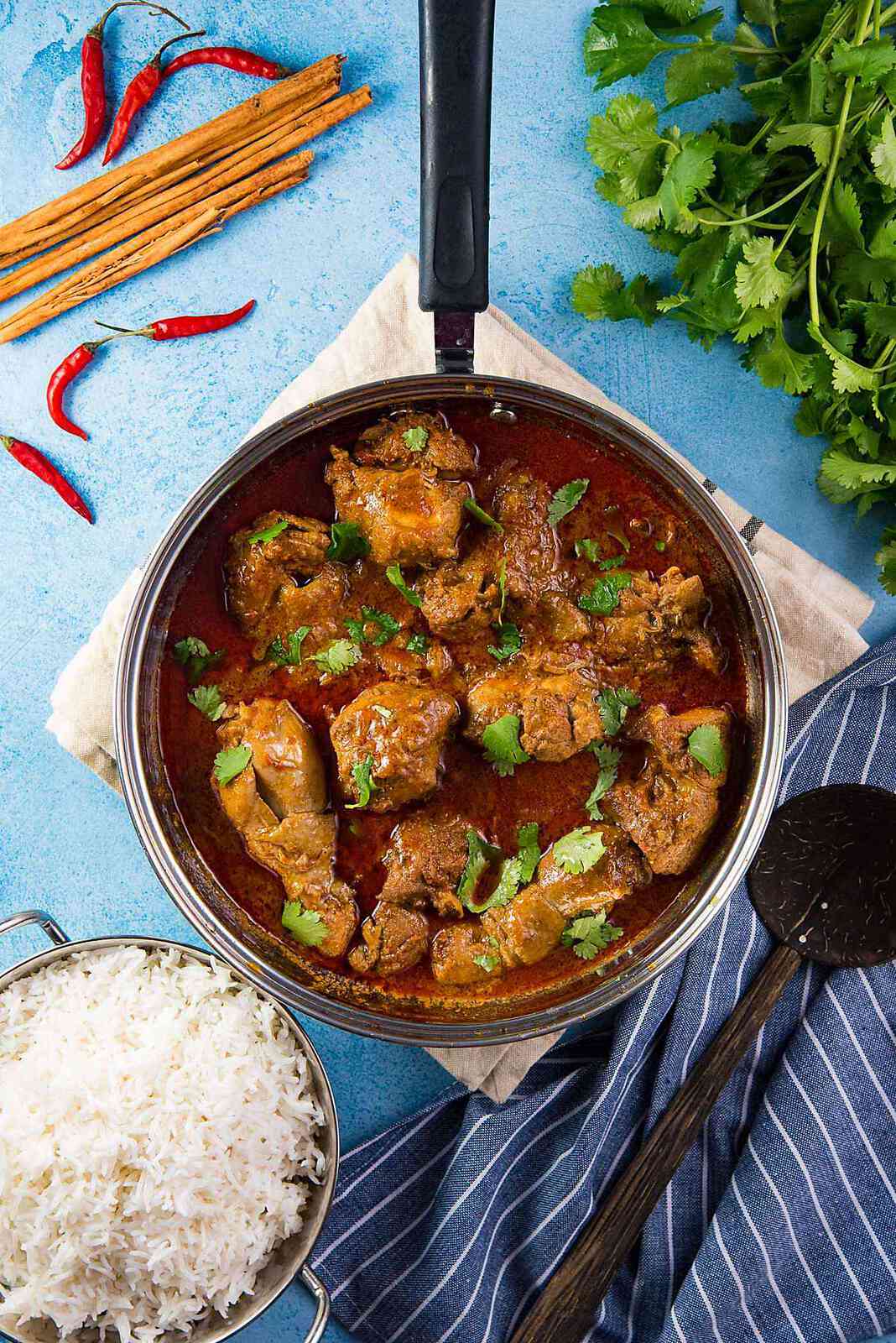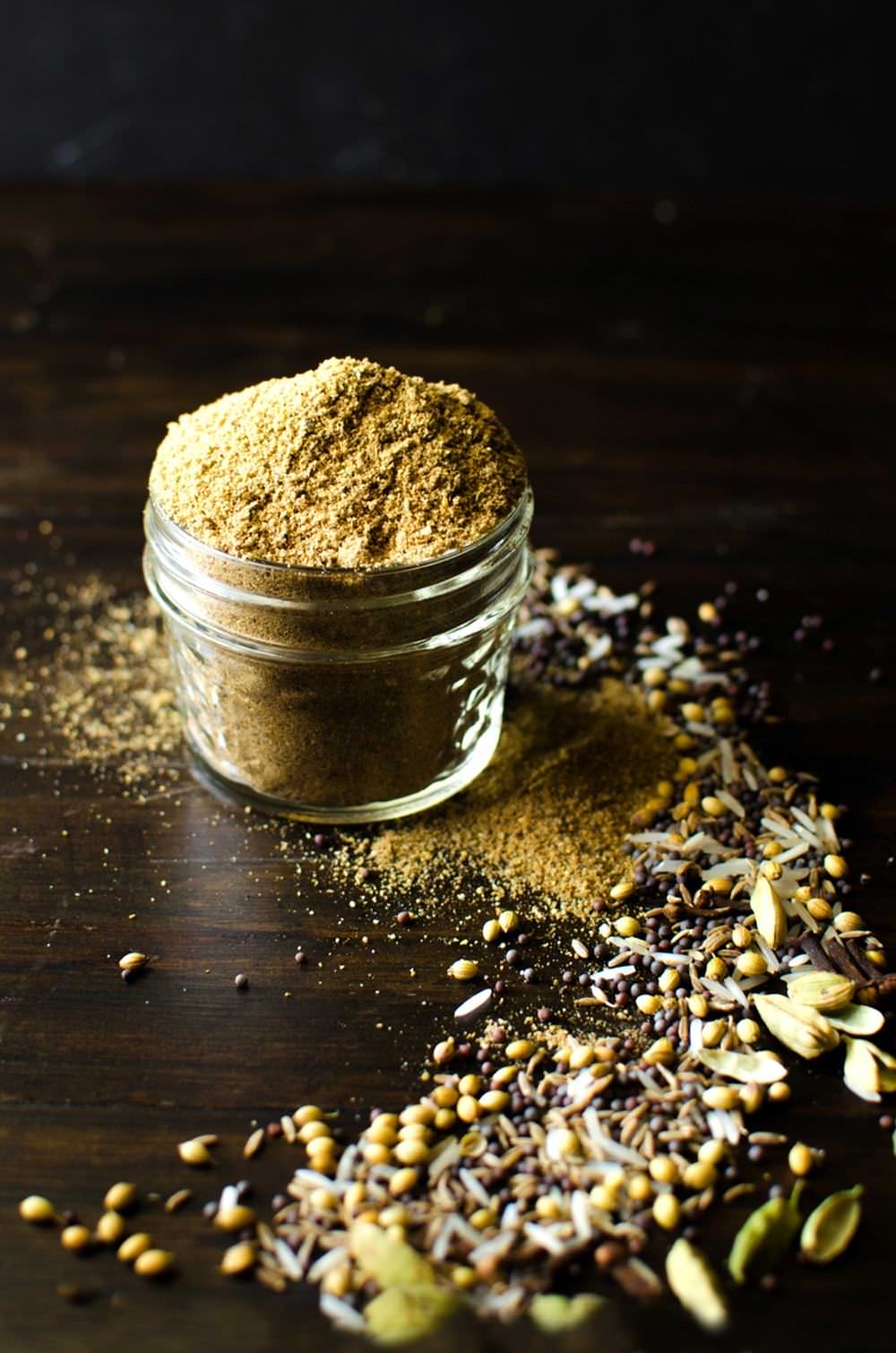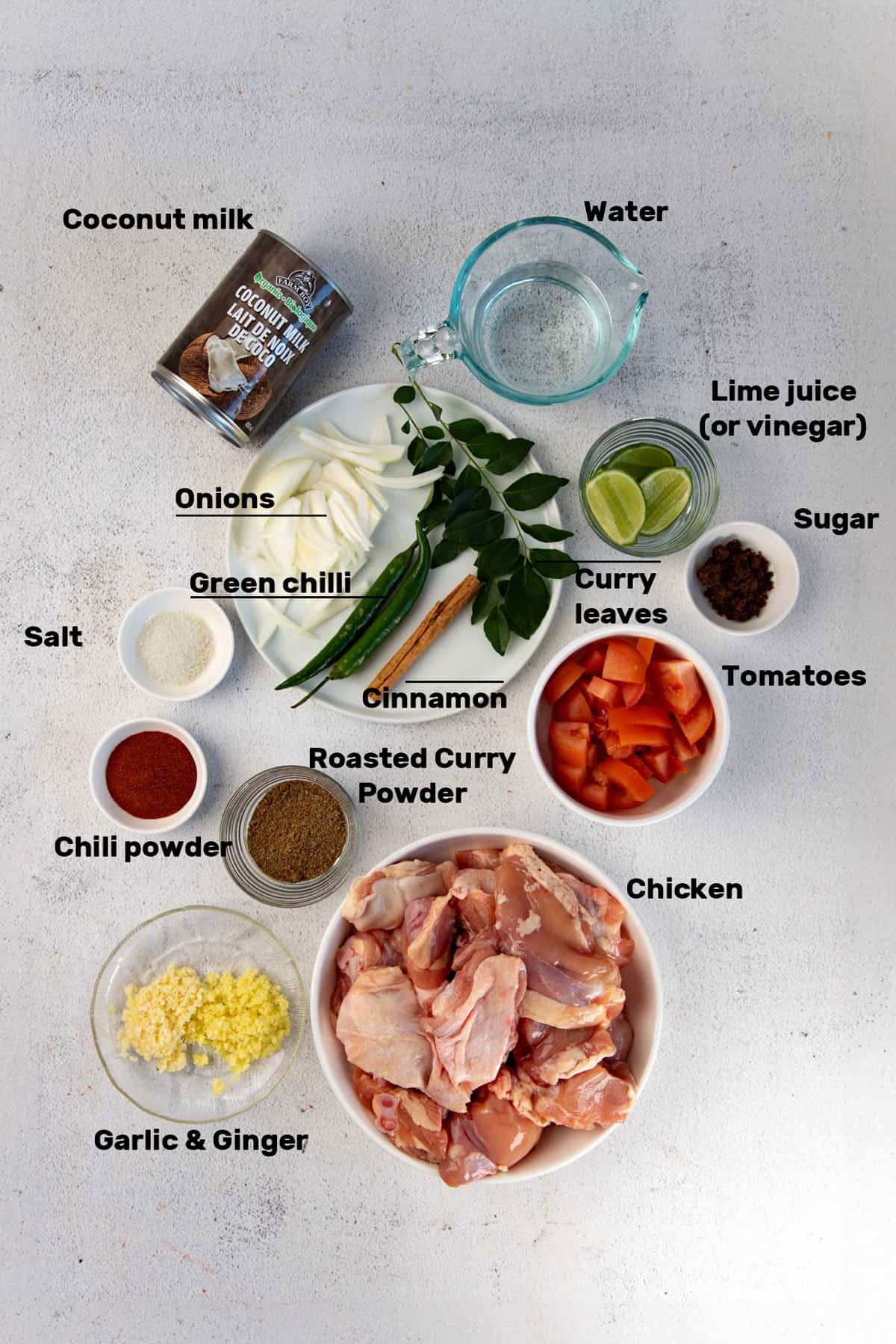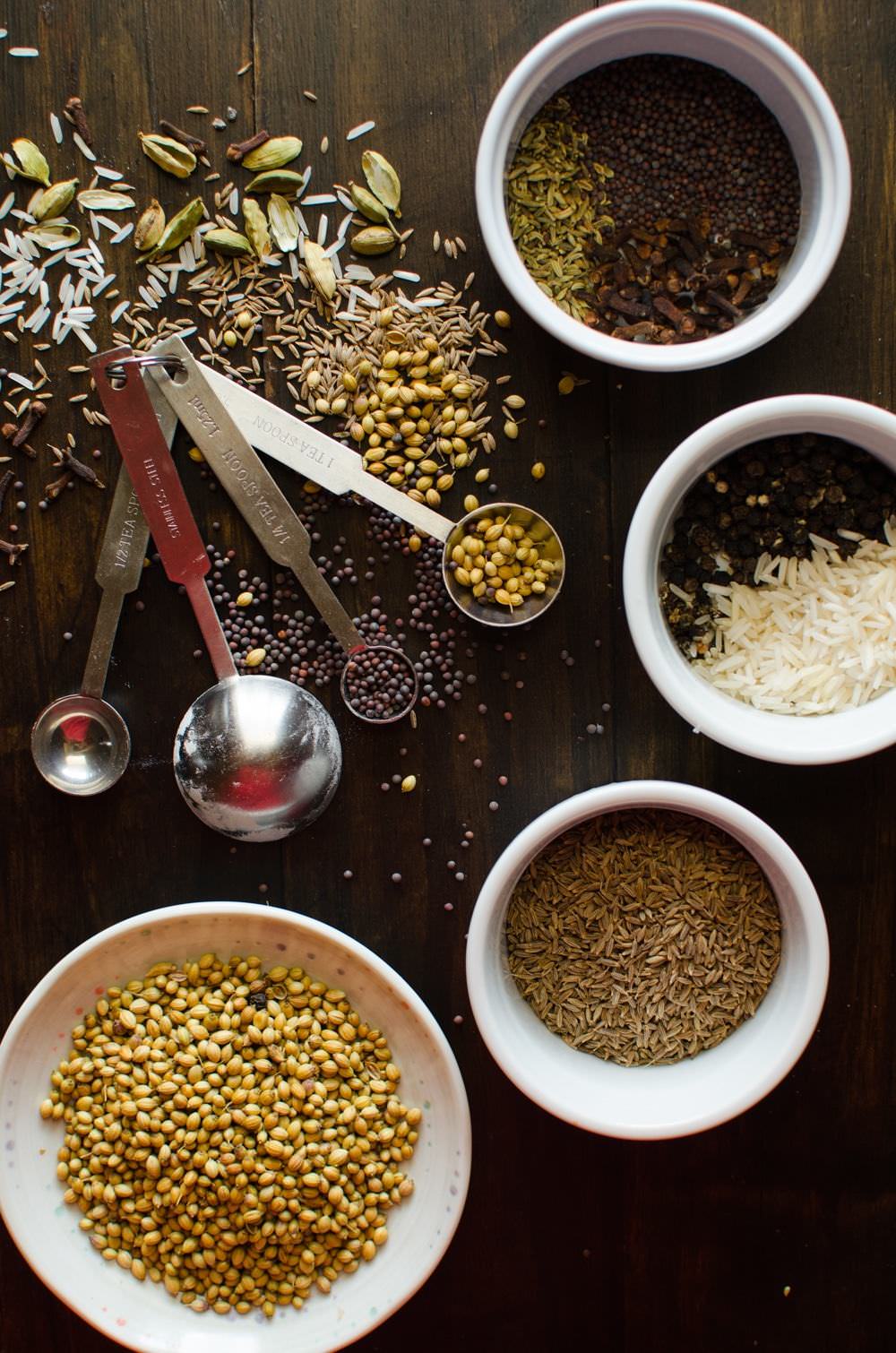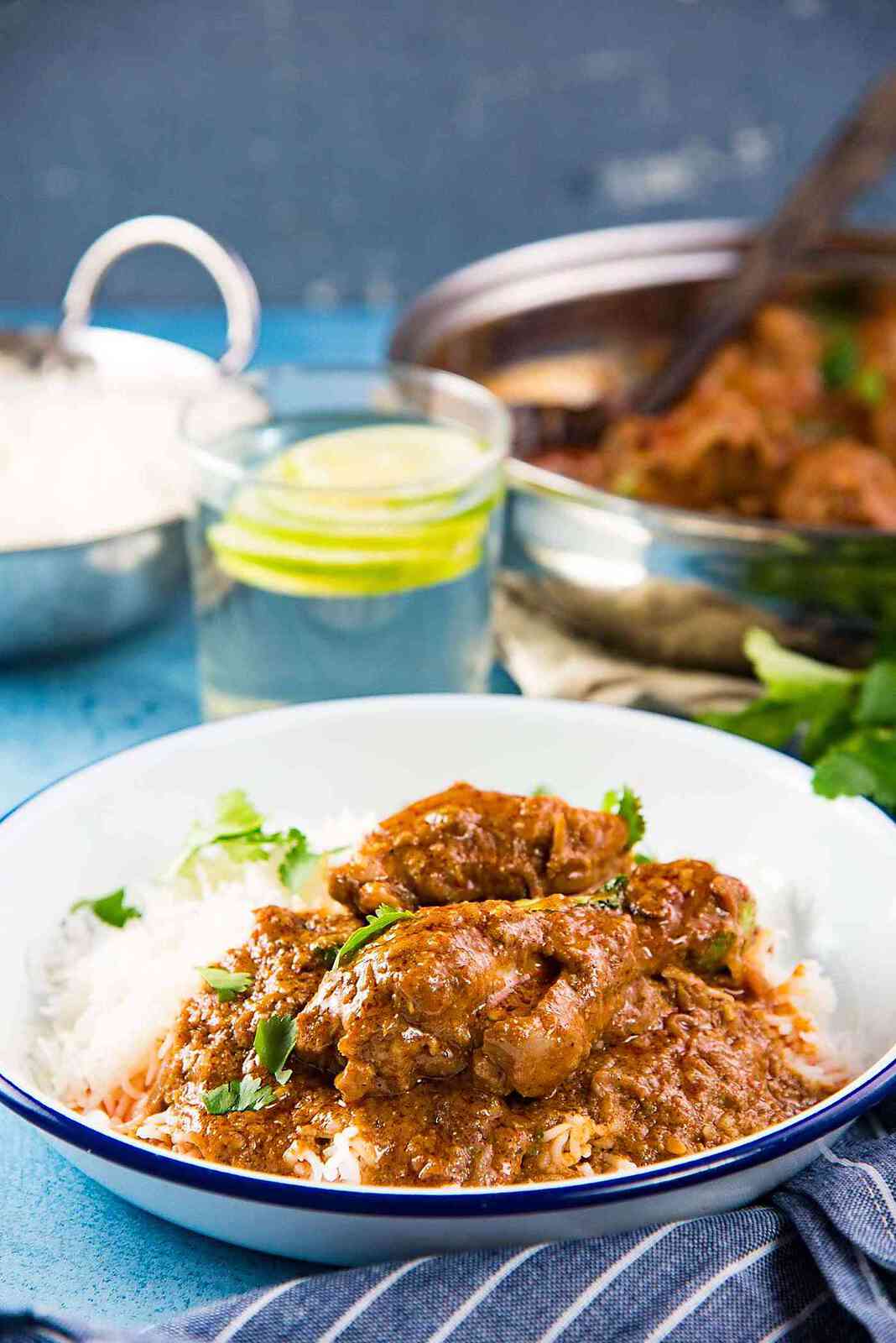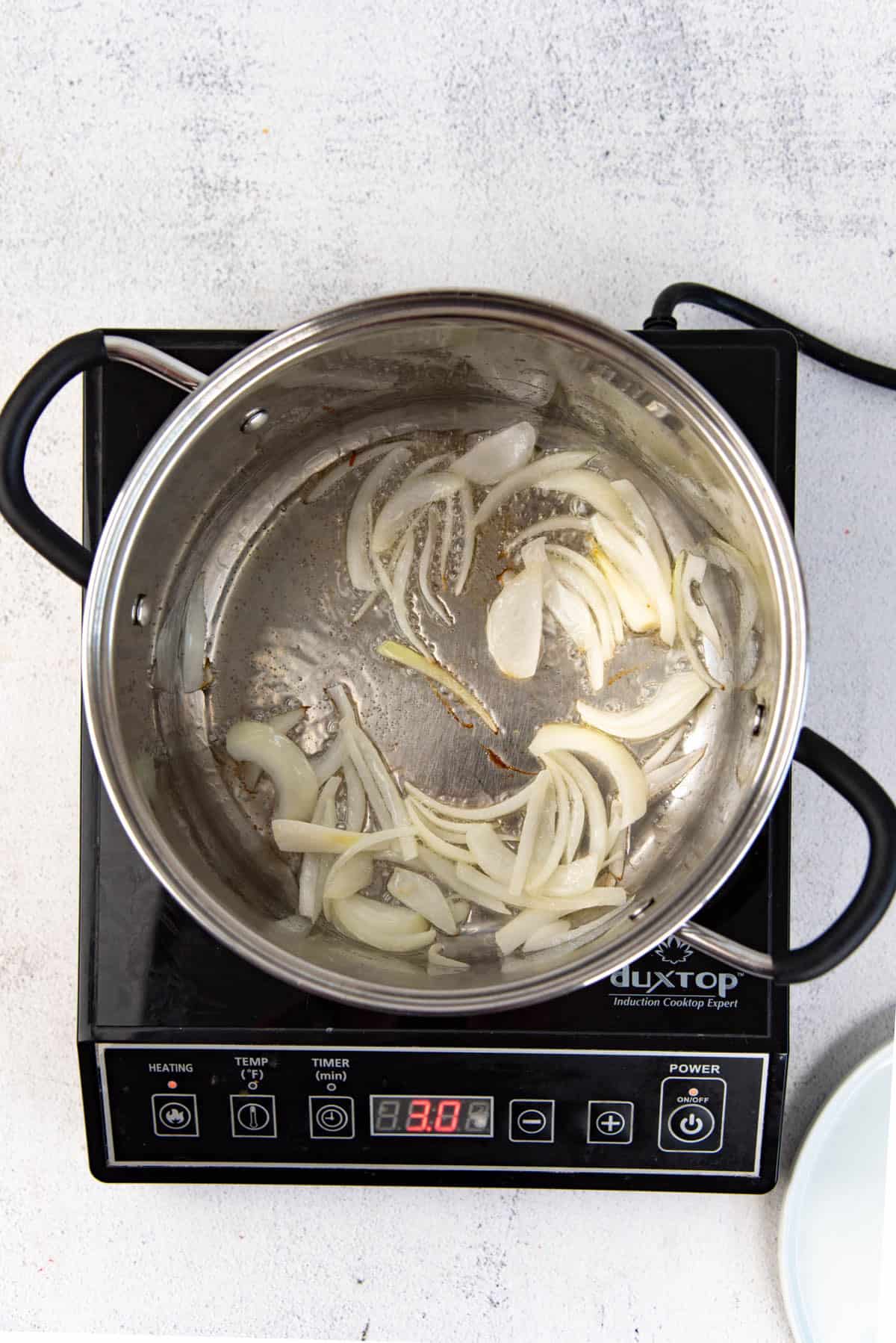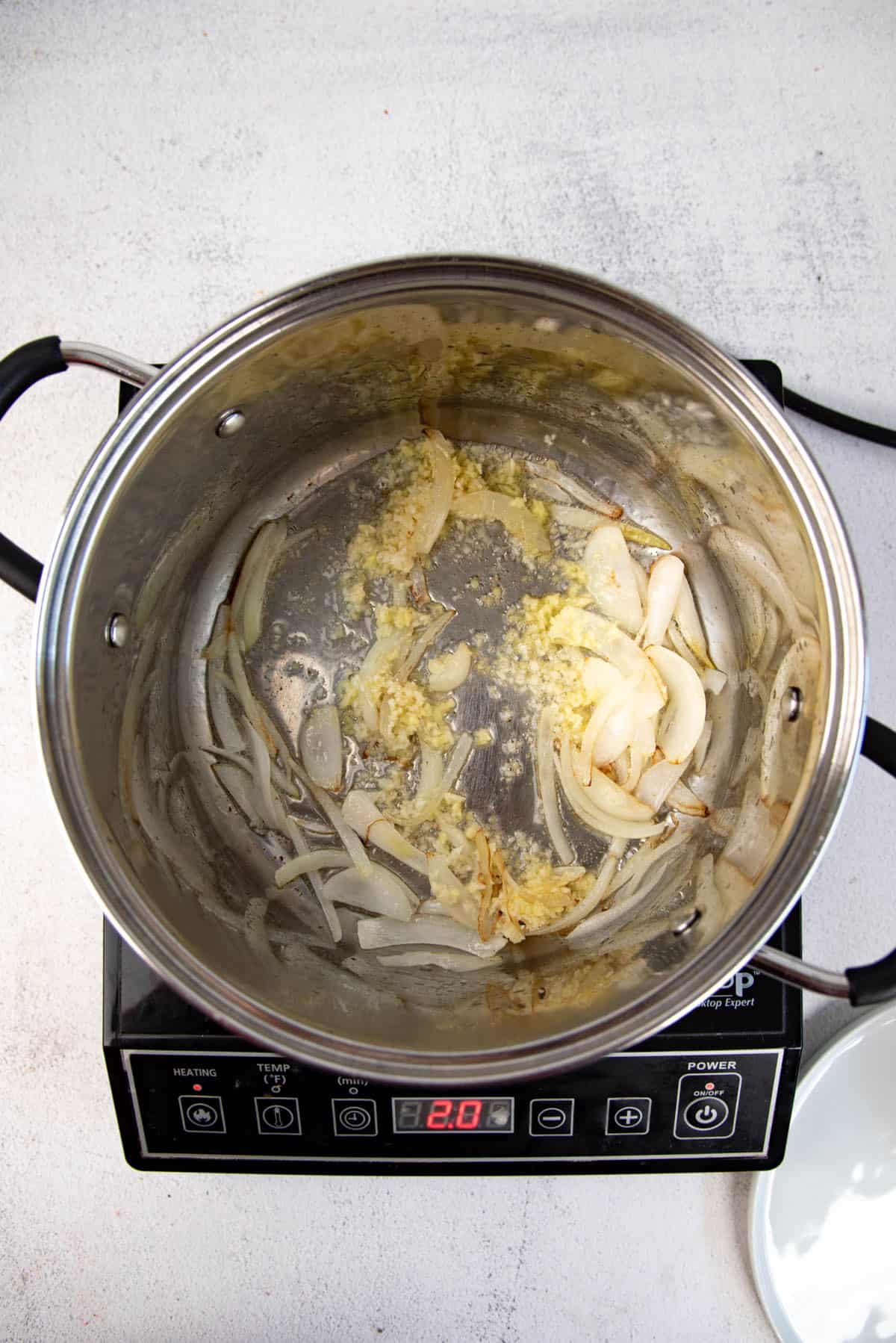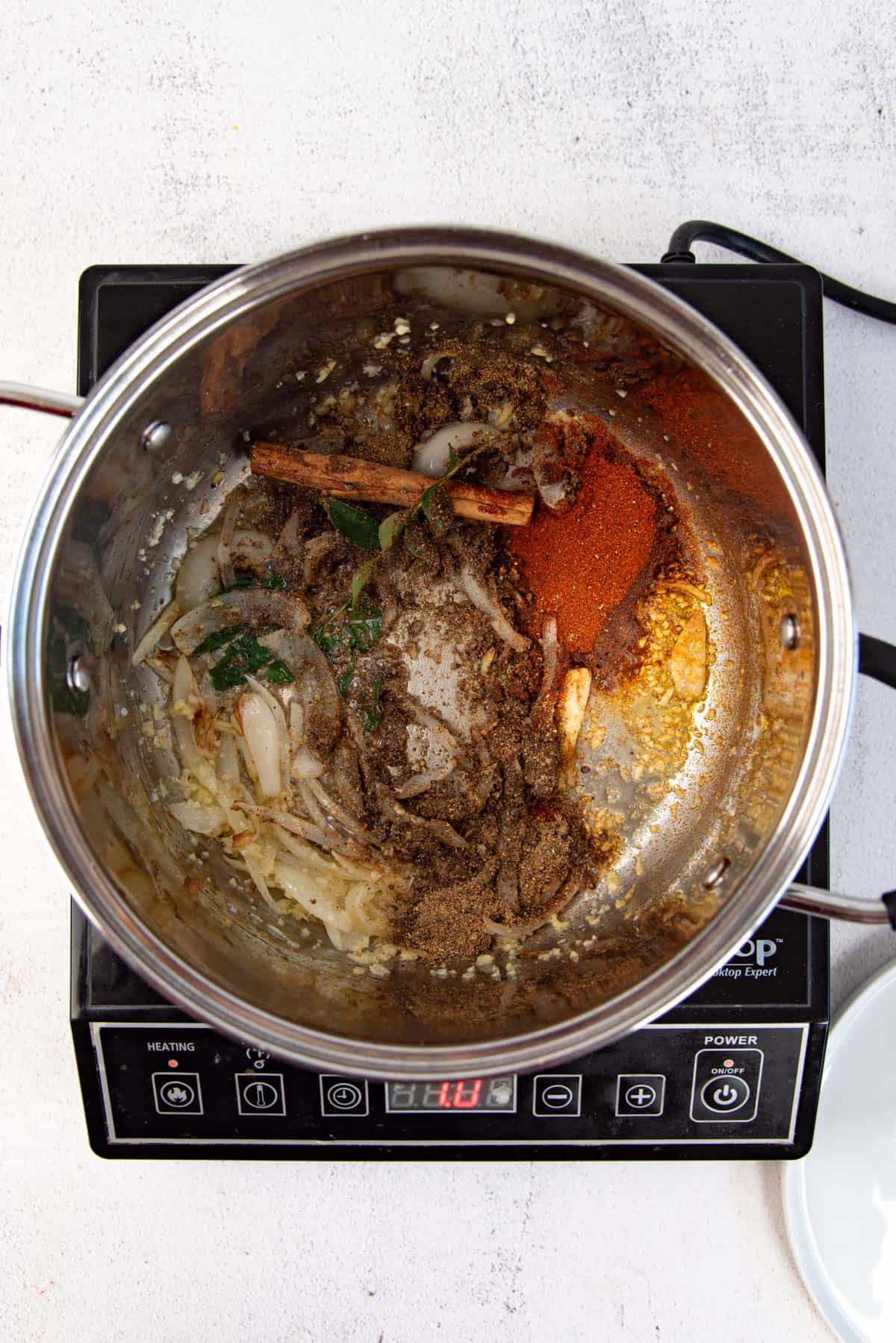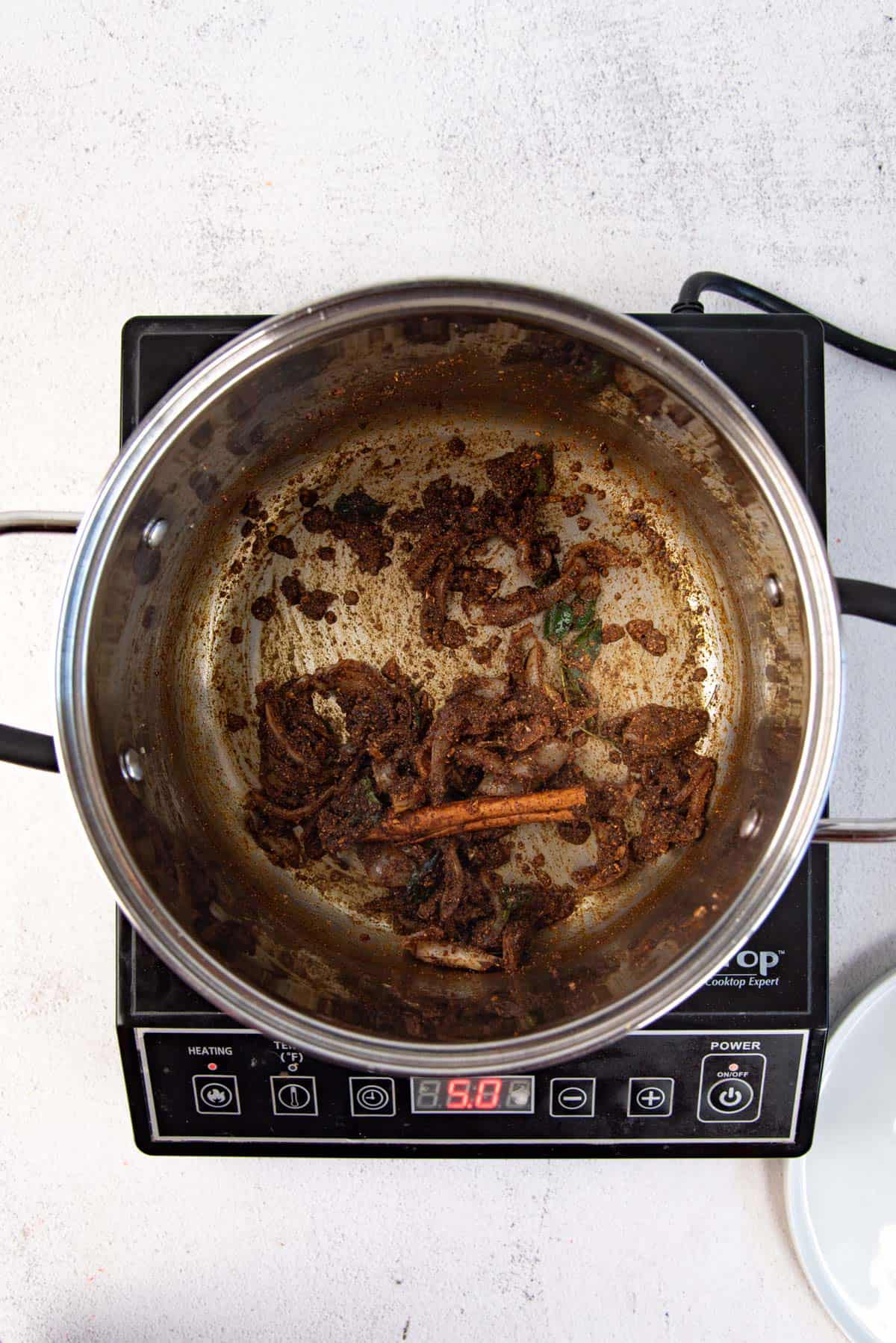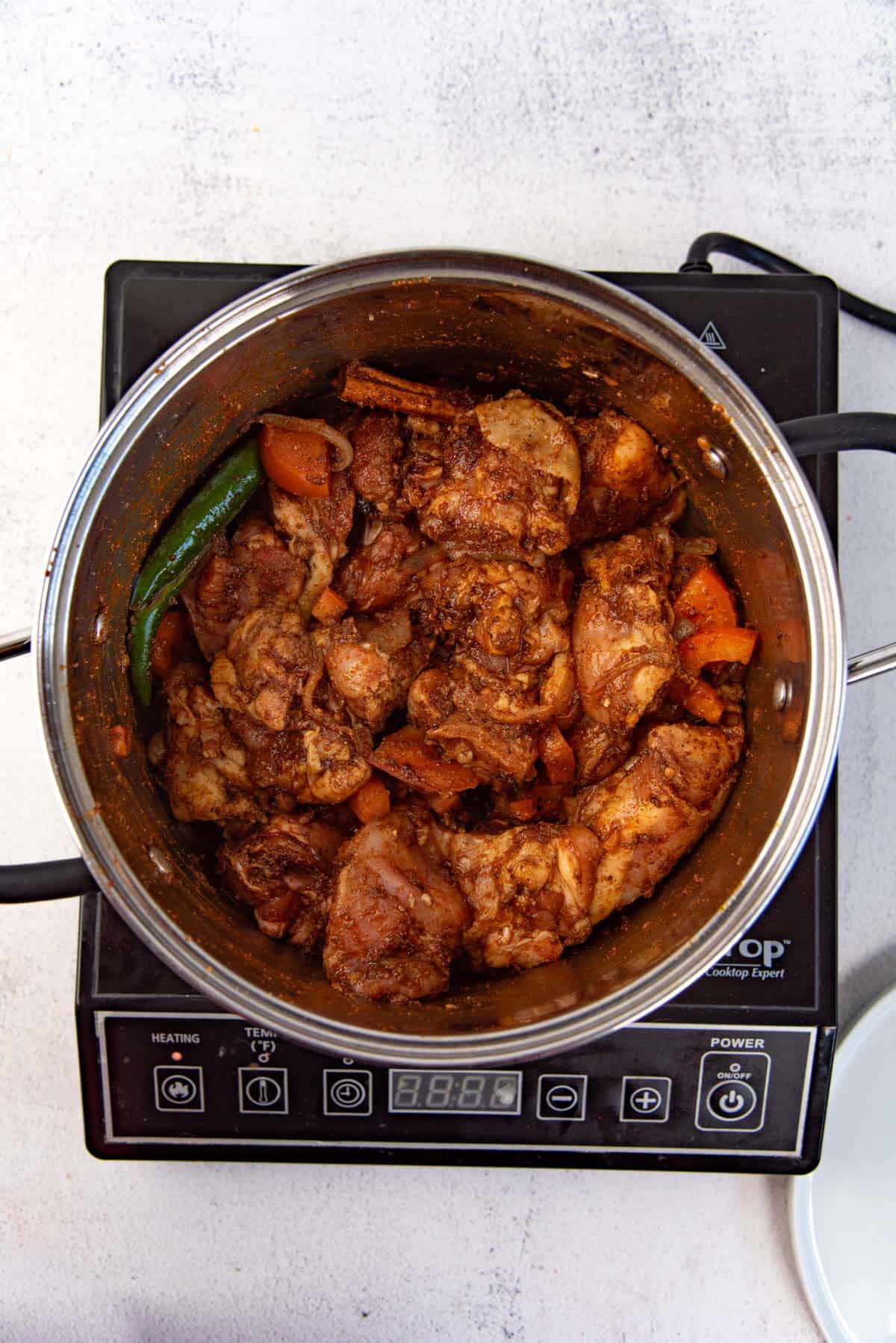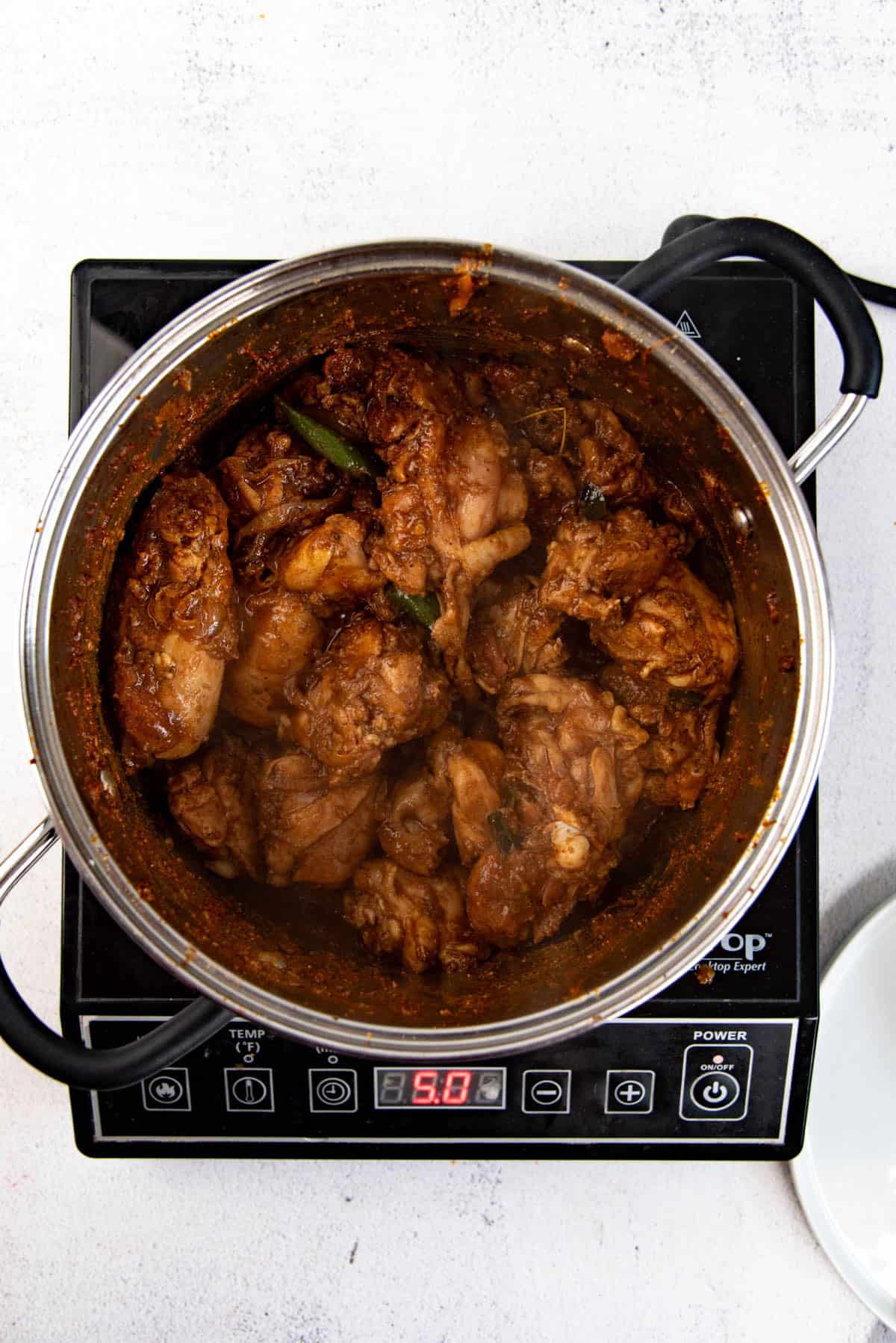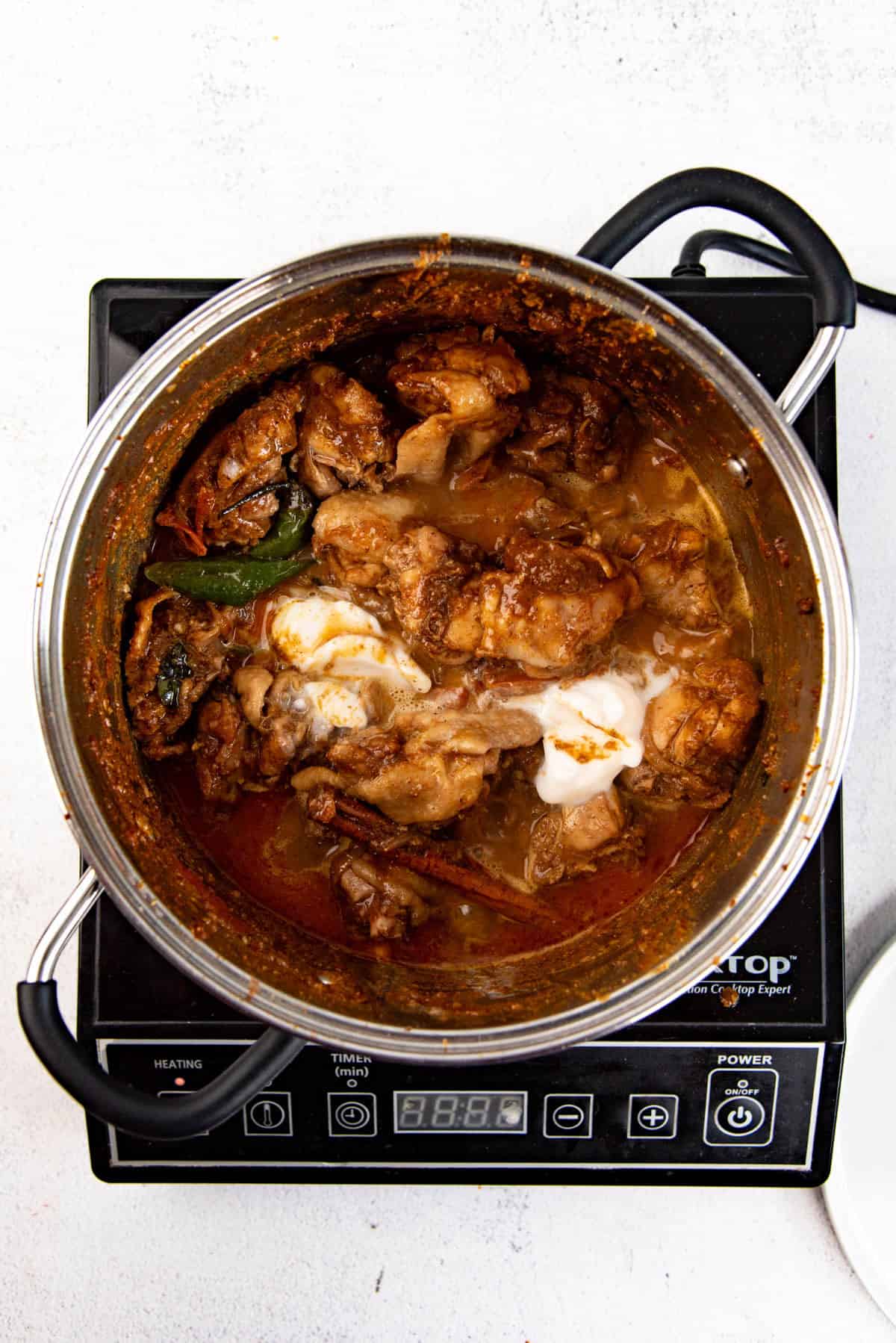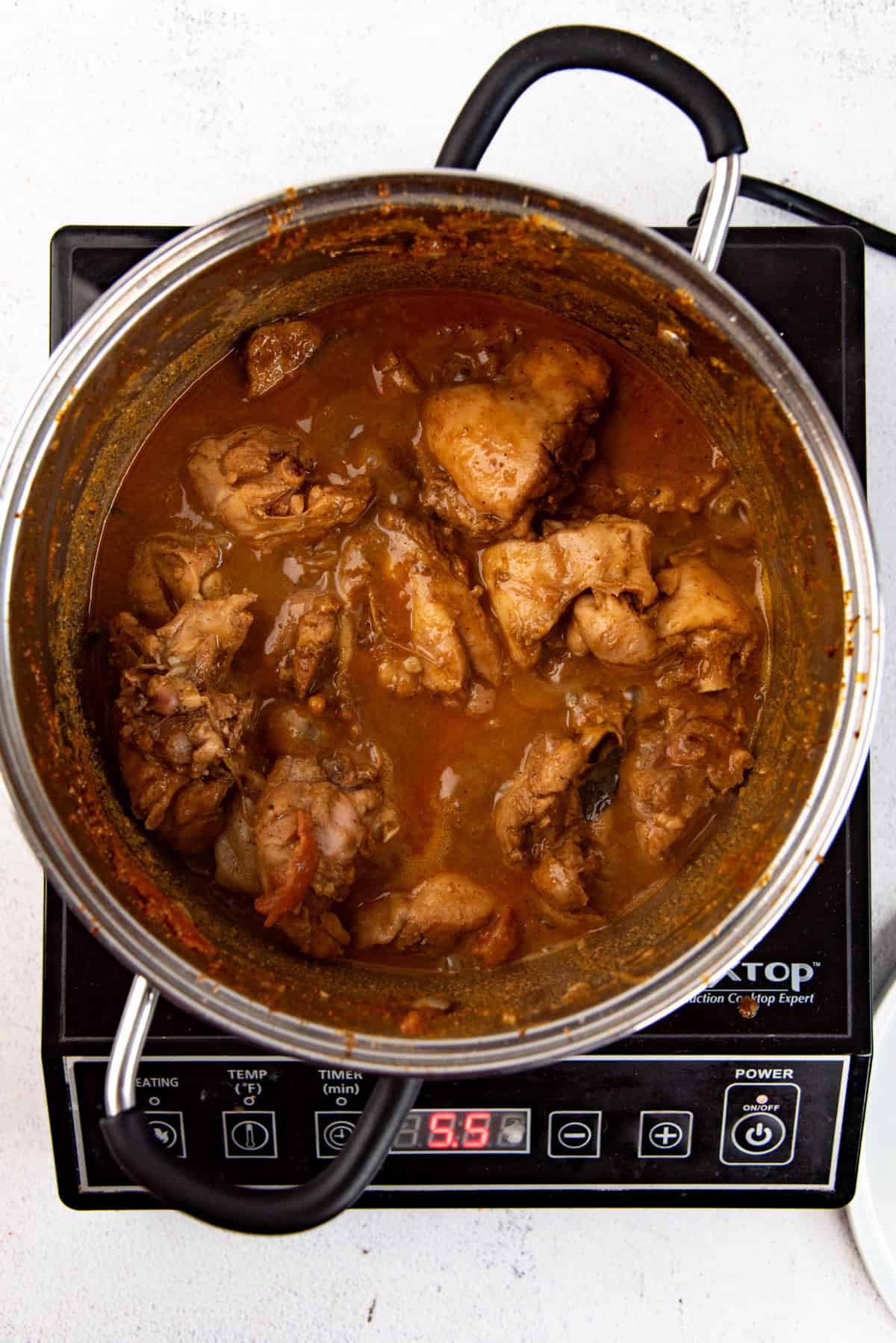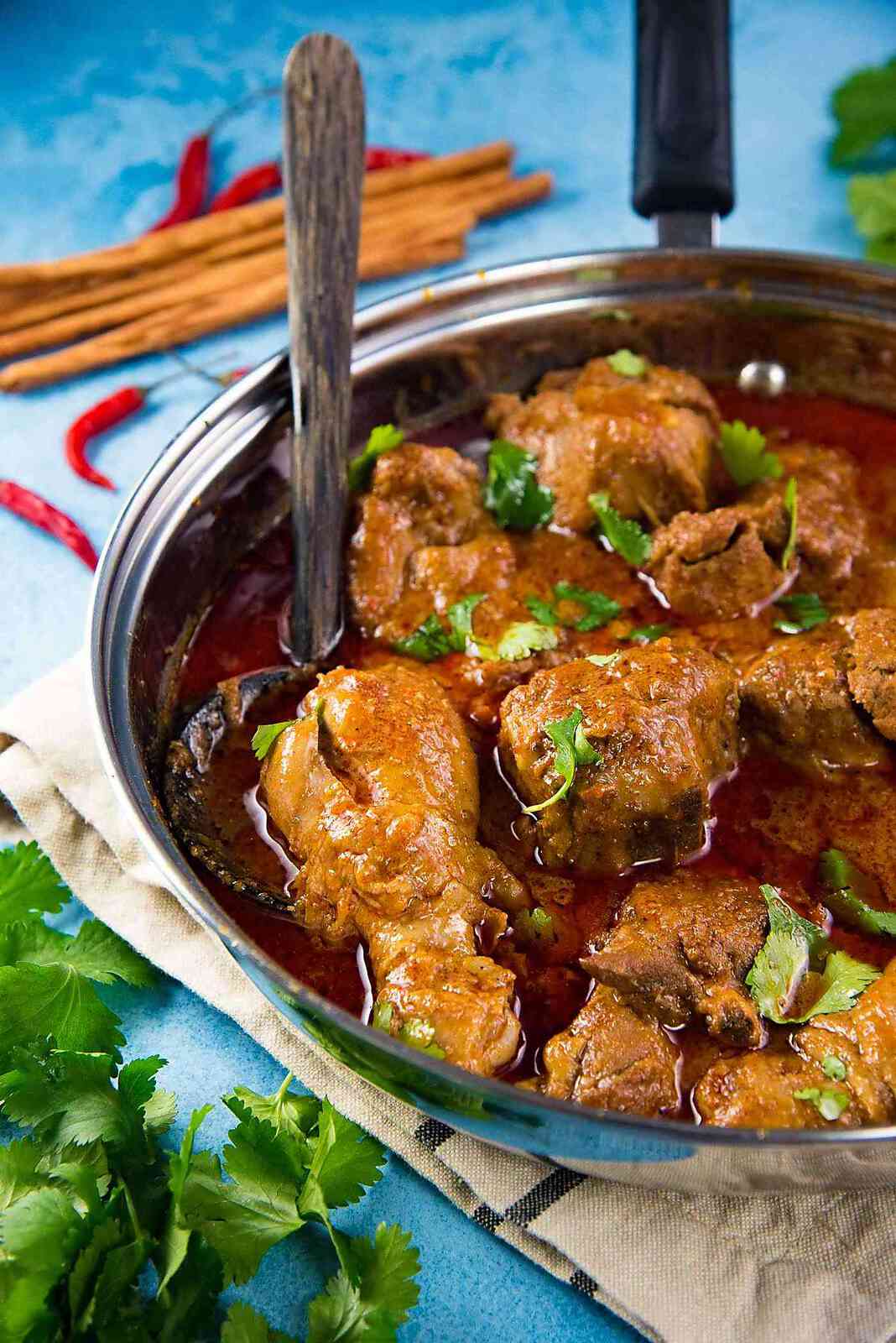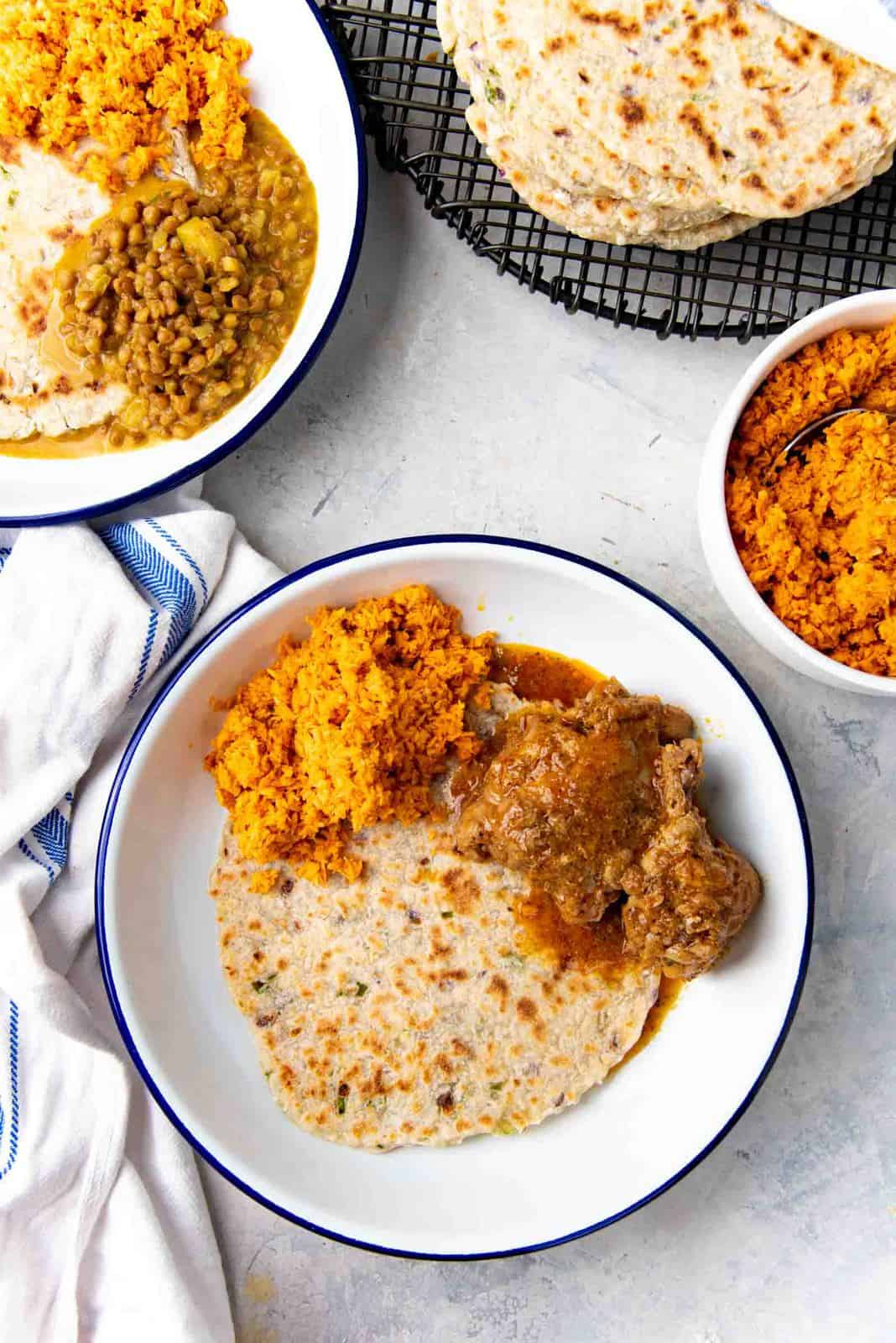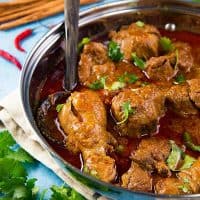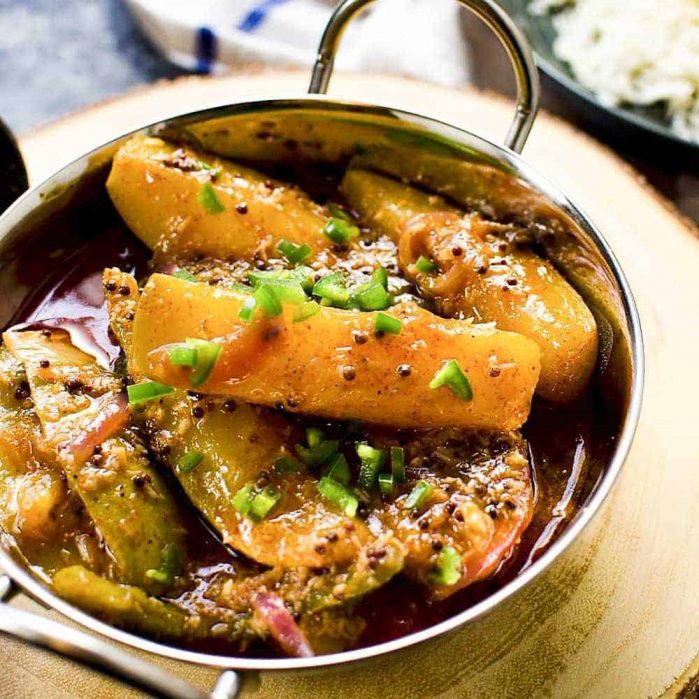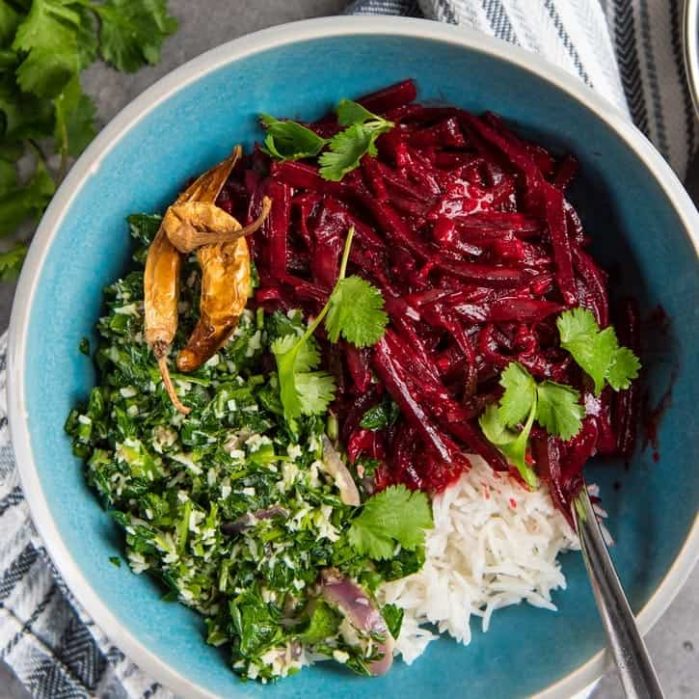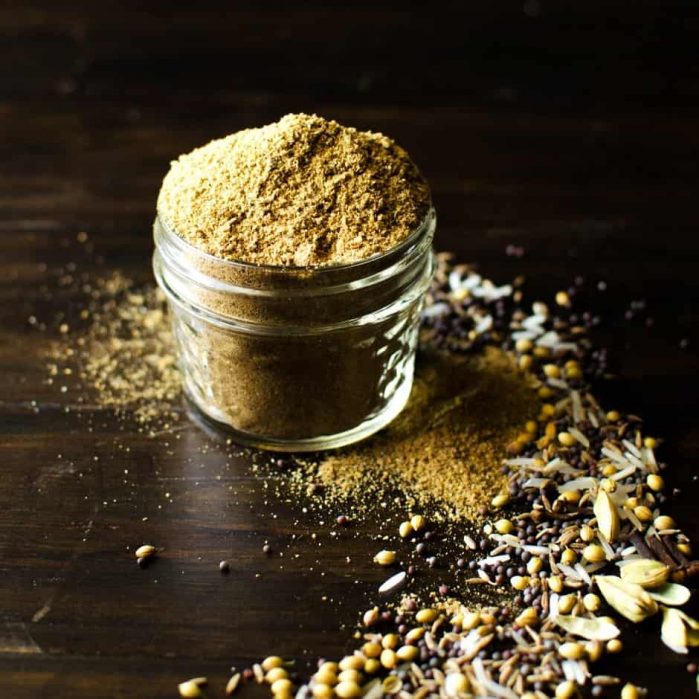I also give you all of my tips and tricks to make the most flavorful chicken curry ever, and how to adapt it to your taste as well. If there’s one dish that I could make with my eyes closed, then it’s this chicken curry recipe. That is no exaggeration and I mean that quite literally. Just a rough calculation in my head estimates that I’ve made this chicken curry and variations of it over four thousand times in my life so far. This is quintessential comfort food for my husband and myself. Every time we cook this chicken curry, we are instantly reminded of Sri Lanka, of our childhood, of home, of full and comforting meals. While we do like any type of curry (check out my vast collection of curry recipes on the blog), this chicken curry really is our go-to. Plus, chicken curry is probably the most common type of meat curry eaten in Sri Lanka and other parts of the world for that matter. If you’re new to the world of curries, or even if you are a seasoned pro, this curry is a must try!
Why this chicken curry is special
This is an easy recipe that is also truly authentic! Many recipes use store-bought curry powder that changes the flavor of the curry depending on the brand. This is CONSISTENTLY delicious, because YOU make your own homemade curry powder. You will honestly never have to follow any other curry recipes on the internet once you’ve made your own (roasted or unroasted) curry powder with my recipe. While it’s authentic, this recipe is also so adaptable! That’s the beauty of it. Don’t have coconut milk – no problem! Don’t like chili? No problem! Don’t have tomatoes? Just don’t add ‘em! This is a step by step recipe, and very it’s easy to follow even for novice cooks, and for anyone new to curries.
Chicken curry
Curry is a popular dish in Asian cuisine, and it refers to many dishes that are made with a mix of spices cooked together with either meat, fish, or vegetables. There is actually no one type of curry powder or curry paste, as this will change from region to region, dish to dish, and even from house to house. A chicken curry is a dish made with a mix of spices cooked together with chicken. There are also many types of chicken curry that have unique names. This includes, South Asian chicken curries (types of Indian chicken curry, Sri Lankan chicken curry, and other South Asian preparations)
Murgh makhani (butter chicken) Madras chicken curry Chicken kadhai Jaffna chicken curry Murgir jhol Chicken salan Dhaba chicken curry
Plus, the flavor-packed chicken curries from South East Asia and East Asia! Such as,
Green curry and red curry from Thailand (and many more) Gulai ayam and rendang chicken curry from Indonesia Cà ri gà from Vietnam Japanese chicken curry
And that is just to name a few. Sri Lankan chicken curry is especially underrated, and I’m here to show you why it’s the most flavorful chicken curry you can make! This is an everyday chicken curry, but tastes truly authentic (because it is!) and complex with layers of flavor.
What an authentic chicken curry should be
To me and my family, a basic and authentic Sri Lankan chicken curry should be,
spicy (and therefore more red in color than brown or yellow!), there’ll be some oil floating on top (especially, if the curry is made with coconut milk. The coconut milk is cooked with the chicken to the point where the coconut milk splits and the oil separates from the milk). the gravy is just so damn flavorful, you can drink it on its own! does not require hours at the stove to develop all that flavor.
This Sri Lankan chicken curry ticks all the boxes! It’s a versatile chicken curry recipe that you can adapt to your taste and still be absolutely delicious.
Ingredients for chicken curry
Chicken – Bone-in chicken preferred. Onion, garlic and ginger Curry leaves – You can also use dried curry leaves that are readily available. Or bay leaves if they are easier to find. Cinnamon – Ceylon cinnamon is a little sweeter and preferred. But you can use regular cinnamon too. Curry powder – specifically a Sri Lankan curry powder. But you can also use a madras curry powder. Chili powder and / or paprika Green chili – Smaller chilies are spicier, so adjust to your taste. Tomatoes – optional, but add flavor! Coconut milk – make sure it’s CANNED full-fat coconut milk for the best flavor! You can substitute with water for a spicier curry. Salt and vinegar – to enhance flavor.
Notes about bone-in chicken vs boneless chicken
You can make this chicken curry with bone-in pieces from a whole chicken, or just bone-in pieces of just chicken legs or chicken thighs. If I’m using chicken thighs, I cut this in half so that we have smaller pieces of chicken. I prefer to cut the bone-in chicken into small-ish pieces so that the flavor will get into to the meat much faster during cooking time. Or for convenience, you can just use boneless pieces of chicken. Obviously, boneless chicken will cook faster, and is my choice when I want to cook a quick curry that can be ready in less than 30 minutes. HOWEVER, a GREAT chicken curry uses bone-in chicken pieces because the bones flavor the curry sauce (or as we call it – curry gravy). If you’re using boneless chicken, I recommend using the red meat (over white meat) of chicken. Chicken thighs (red meat) has more flavor and won’t overcook easily and can withstand the cooking time. For a healthier option you can use sliced boneless chicken breasts too. But make sure to cook them for a shorter amount of time OR braise them for a longer time to make it tender. Otherwise, the pieces will be too dry. To cook with sliced chicken breasts for a quick curry, make sure to make the delicious curry sauce FIRST and then add the chicken at the end and only cook it until the chicken is cooked through. Some choose to remove the chicken skin to lessen the fat in the chicken curry as well. I have always loved adding the skin, so I compromise and add half with the skin, and half without. So that’s totally up to you!
Ingredients for curry powder
I use my own homemade roasted Sri Lankan curry powder to make this delicious chicken curry. It’s made with,
Coriander seeds Cumin seeds Black peppercorns Cardamom seeds from cardamom pods Mustard seeds Cloves Fennel seeds
The bolded ingredients above are the most important! I leave out the rest of the ingredients if I don’t have them at home, and the curry will still come out delicious because we add additional spices to each curry we make! This curry powder has SO MUCH robust flavor and is the perfect combination of spices for any curry, especially for classic Sri Lankan curries. And since it’s not a very spicy curry powder, you can control how much chili powder you add as well.
Notes about curry powder
A lot of chicken curry recipes use store-bought curry powder from western brands and this just can result in a bland curry. Some supermarket curry powders are absolutely listless, and make your curries taste extremely bland. So, taste and adjust if that’s the case.
The first four ingredients mentioned above are crucial for a curry powder. For a South Asian chicken curry, avoid curry powders that contain garlic powder, celery powder, and even salt.
The only “western” brands of curry powder that I recommend to make an authentic chicken curry are,
Frontier co-op Simply organic Splendor garden
However, you can purchase excellent curry powder from South Asian stores and brands that will work beautifully with this recipe. Such as,
Rani curry powder Wijaya curry powder Also smaller boutique curry powders – but check the prices! Since they from a boutique, they can be needlessly expensive too.
I would highly recommend making my curry powder for this curry (or other curry recipes on my blog).
How to make the best chicken curry
A great chicken curry is a very versatile and easy to make dish. Sure, there are plenty of slow cooker versions and quick versions of chicken curry that you could find online with a google search. These recipes mostly employ the “dump and cook” method of adding all the ingredients into one pot at the same time and then cooking all the way through. That’s how you get the difference between a bland, mushy, mediocre-at-best chicken curry and a truly mind-blowingly flavorful curry! HOW you cook the curry determines the flavors just as much as the ingredients. The proof is in the curry. So here I share the inside scoop, some of the well-known “secrets” to cooking a fantastic chicken curry. Plus, I also share some variations to standard Sri Lankan chicken curry as well. This Sri Lankan chicken curry (or any other curry) can be made in two different ways.
“කිරට” (kirata = i.e. milky / creamy). A chicken curry made with coconut milk, and can be less spicy, richer in taste because of the creamy coconut milk component. OR “මිරිසට” (mirisata = i.e. chili / spicy). A chicken curry made without coconut milk, so can be spicier, and lighter.
You can easily adapt this same chicken curry recipe to make either of these versions of chicken curry. We prefer the “kirata” style with the coconut milk that is a richer tasting curry because of the coconut milk. However, we make the “mirisata” style (spicy version) more often so that I don’t use too much coconut milk, or to use less coconut milk in everyday cooking.
Equipment and tools used for this recipe
Sharp knife to cut a whole chicken into pieces. Spice grinder to make the curry powder. I like to use an inexpensive coffee grinder to make my spice powders.
Step by step instructions (with pictures)
Step 1 – Prep all the ingredients. Make sure the chicken is prepped by cutting it into the size you want. If you use a whole chicken, you will need to break it down first and set aside. I usually have the chicken broken down ahead of time, so that I don’t have to do this at same time as I’m making the curry. Have your curry powder ready as well. Again, I have a batch of my homemade curry powder ready to go at all times, but you can also make it just before you need it. Step 10 – Once the chicken is cooked through and the curry is done, taste it. Adjust the seasoning and a add little coconut vinegar or lime juice to your taste. Add more water if needed. Since the curry powder will be “fried” in oil, it still cooks and deepens in flavor! Mix in well and simmer until cooked through. The curry can be simmered with the lid on or off. For a curry with less gravy – simmer without the lid. If you like more gravy, you can simmer with the lid on. I personally like to simmer the curry without the lid for at least 10 minutes because I can always add more liquid at the end. For a creamier chicken curry – add the coconut milk at the end! Then bring the curry to a simmer, and then you’re done! The longer the curry simmers after adding coconut milk, the more likely it will split (which is what we like in our family!).
How to make the best curry powder for all your curries
The key for the best homemade curry powder is to,
Have a great balance of spices. Use whole spices to make smaller batches more often.
What I love about my recipe for Sri Lankan curry powder is that it’s such a versatile curry powder! I sometimes skip the cloves and mustard because I’m not the biggest fan of cloves. But with a combination of coriander, cumin, black pepper, cardamom, and fennel, I can add more spices to different curries as I’m cooking to make them taste unique in their own way! You can also make the curry powder without roasting it. Then sauté the curry powder in the oil to develop the flavor as you cook.
Recipe variations and tips for success
For best results, use a whole chicken cut into pieces, OR bone-in chicken (like legs or thighs). The bones in the meat add more flavor to the curry! Use Sri Lankan curry powder. If you can’t find it, you can easily make your own following my homemade curry powder recipe. Sri Lankan curry powder has a lot of coriander seeds, and doesn’t have turmeric. You can add turmeric if you like, but I find that you don’t have to add it to every curry you make. You can substitute Sri Lankan curry powder with madras curry powder if you really must, but just remember that the taste will be different. I recommend making your own Sri Lankan curry powder, which genuinely tastes better and is quite versatile too. Remember the flavor of your curry powder will change depending on the curry powder you use, and the amount will need to be changed depending on the flavor. My chicken curry recipe has been developed for my homemade curry powder. Since there is pepper in the curry powder, you do not need to season with salt and pepper at the end too. Just season with salt to your taste. Use coconut oil if possible. but if you don’t have coconut oil, you can use vegetable oil. Use good quality canned coconut milk whenever possible. Go for full fat for the best flavor. After you cook the chicken curry, let the chicken curry sit for a while. This allows the chicken to absorb the flavors of the curry gravy. This is why this chicken curry tastes even better the next day! Curry leaves are preferred for curries, but if you can’t find them, you can substitute with bay leaf or pandan leaf. Layer the flavors for best results. Don’t dump in all the ingredients at once. Soften the onions and garlic and ginger first before adding the spices. This lets different flavors grow and strengthen. Using roasted spices adds an extra layer of flavor.
How to add more flavor
For an added twist and to add more flavor (which is not traditional) – roast the chicken curry in the oven towards the end. It caramelizes the chicken (which you cannot do on the stove-top), giving it an extra layer of texture that enhances the flavor. You can also caramelize or deep fry the chicken pieces BEFORE you make the curry as well (like you would for stews). But this is not necessary for an everyday easy curry version! We usually only do this for special occasions – like if we were having company over or for a party. Growing up, we called this “birthday chicken curry” because my aunt always made this for our birthdays!
How to adjust the spice level
If you’re not a fan of spicy, you can adjust this level to suit your preferences. You can add less black pepper to the curry powder. Don’t eliminate it completely because black pepper is an important part of this chicken curry. If you want that characteristic red color of the curry, but not the heat, then increase the paprika and reduce the cayenne pepper. But if you can handle spicy curries, or prefer them that way, then go ahead and add 2 tsp of cayenne pepper as I do. And if you choose not to add chili powder / cayenne pepper OR the paprika, that will be fine too. The result will be a very mild Sri Lankan chicken curry, that’ll be mostly brown in color (and not a red curry), with a slight red tinge (from the tomatoes), but it will still be just as delicious without the heat.
How to serve this chicken curry
With rice
We serve it with rice (basmati rice, jasmine rice etc.) and some side dishes. My favorites are red lentil curry (dhal curry) and beetroot curry! I always loved chicken curry and beetroot curry together. I highly recommend that combination of sweet beetroot curry with the spicy chicken curry. There are many more curry side dishes that you can pair with this chicken curry. Carrot curry, cauliflower curry, green bean stir fry, mushroom curry, pumpkin curry, jackfruit curry (polos curry), mango curry, creamy cashew curry, spicy apple curry are just a few vegetable curry examples.
With roti
Another option is to serve it with roti. Sri Lankans love and prefer to eat pol roti (coconut roti), which is a flat bread made with coconut and wheat flour. But we also love godhambara roti (or roti canai or roti paratha).
With bread
Simply regular white bread (sandwich bread) is always a good option, especially when you can dip it in that flavorful curry gravy. And naan (like this whole wheat naan) is another popular option. You can also serve this with,
Hoppers (rice flour pancakes or aappa / aappam) String hoppers (rice flour noodle cakes – indiaappa)
What to do with leftovers?
If you have leftover chicken curry, here is my absolute favorite way to re-purpose it! Turn it into Sri Lankan chicken kottu Roti – a very popular Sri Lankan street food! You can also make a really easy chicken curry fried rice or a curried chicken salad sandwich, or a curry chicken version of this curried beef grilled cheese sandwich! You can also use the leftover chicken to make curried chicken buns! I’ve previously shared these curried beef buns, so simply substitute the curried beef with leftover chicken curry.
More curry recipes you’ll love
Sri Lankan crab curry Sri Lankan shrimp curry (prawn curry) Authentic black pork curry Fish curry Beef curry Spicy dry beef curry (Sri Lankan devilled beef) Lamb curry (mutton curry) Sri Lankan meatball curry
Frequently asked questions
